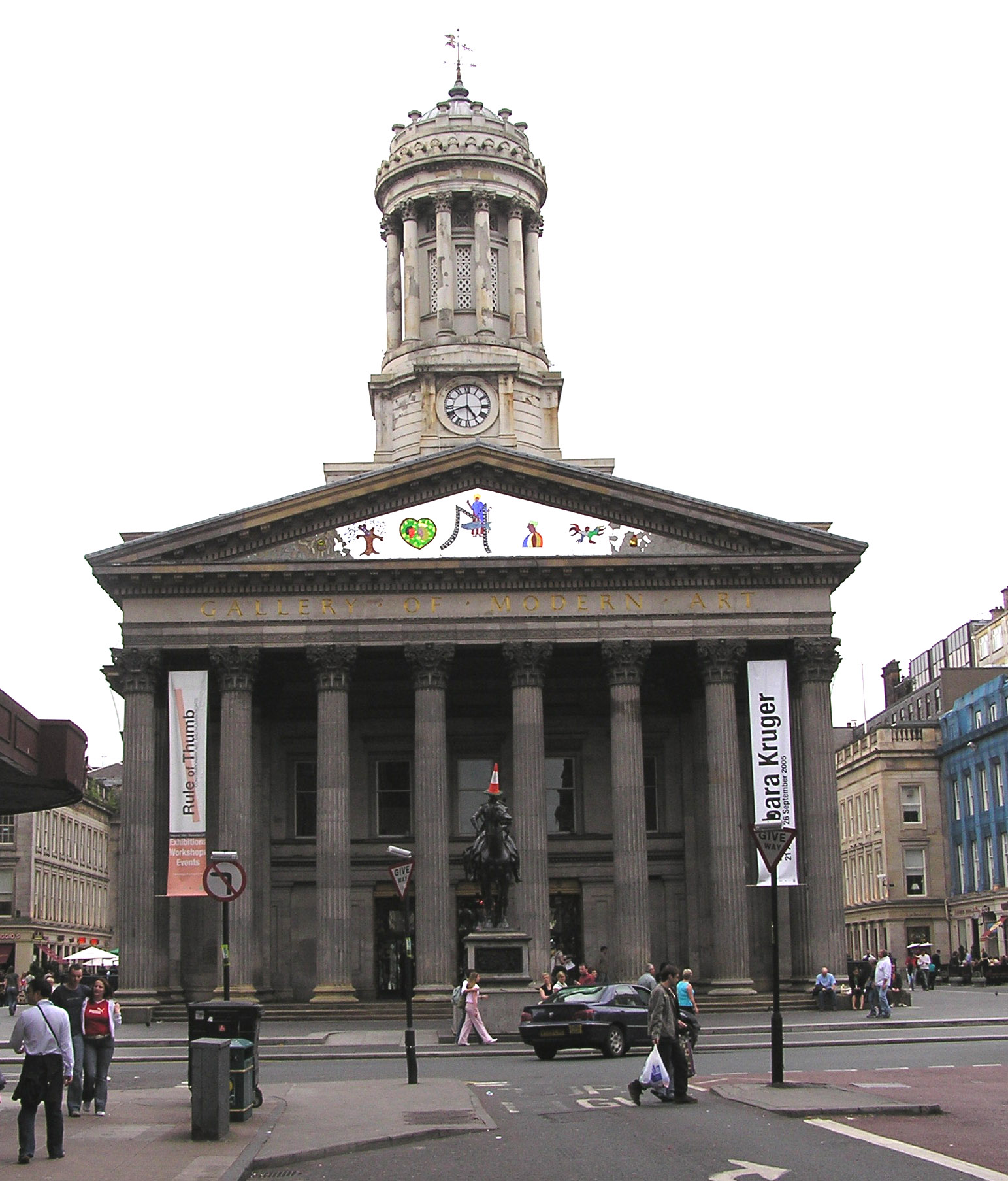The Gallery of Modern Art (GOMA) in Glasgow, Scotland’s largest city, opened a Banksy exhibition called Cut & Run on June 15th. This is Banksy’s first officially sanctioned exhibition in fourteen years, which makes it a momentous event given the anonymous street artist’s rise in notoriety since his last show. Around the same time as the opening, a Banksy-style work appeared on one of Glasgow’s main streets. For a brief moment, some believed that not only was Banksy active in Glasgow, but he may have been trying to drum up interest in his new show. However, those theories were quickly quashed when two local artists claimed responsibility for creating what we now know is a fake Banksy mural.
On a wall on Buchanan Street, Ciaran Glöbel and Conzo Throb created a graffiti mural featuring a rat, a common subject for Banksy. In the mural, the rat is wearing a hat with a Union Jack pattern, carrying a marching band bass drum with the phrase ‘God Save the King’ painted in red across its surface. Many Glaswegians, and Brits in general, will recognize these features as references to the Orange Order, a conservative unionist group mainly known for supporting Northern Ireland and Scotland remaining part of the United Kingdom. They are also known for their parades and other public displays where such paraphernalia are commonplace. The rat’s tail is also caught in a mouse trap, where a copy of Rupert Murdoch‘s newspaper The Sun is the bait instead of a piece of cheese. Glöbel and Throb are admirers of Banksy and claim that they studied his work extensively in preparation for executing the graffito. Though the pair of Scottish street artists did try to pass off their work as a genuine Banksy, they were quite quick to come forward once it was revealed that Banksy was not the author of the work. Glöbel even posted a video on his Instagram showing how the two created the mural.
One of Glöbel and Throb’s goals in creating the mural was to highlight an interesting double standard in the contemporary art market. Street art has been crossing over into the mainstream art market for decades, with celebrated artists like Keith Haring and Jean-Michel Basquiat being some of the first to elevate art forms like graffiti in the eyes of collectors and gallerists. Today, artists like Bradley Theodore, Shepard Fairy, JR, and Bansky continue to influence contemporary street art and its market. However, many lesser-known artists have their work dismissed, painted over, or washed away since it is often considered vandalism rather than art. Case in point, the Glasgow City Council fell right into Glöbel and Throb’s trap. As soon as it was revealed that they were the true artists rather than Banksy, local authorities partially painted over the mural and announced plans to remove the work.
Despite its world-renowned street art scene, Glasgow spends more money than any other British city to remove graffiti from its public areas. This fact was reportedly one of the reasons Banksy chose Glasgow as the site of his new exhibition. The GOMA itself is somewhat of a symbol of subversive art. The equestrian statue of the Duke of Wellington that stands out front is one of the most iconic symbols of the city. But, since the 1980s, the statue’s head has been perpetually topped with an orange traffic cone. No matter how often the cone is removed by police, another takes its place shortly thereafter. It is one of the world’s longest-running pranks and, arguably, one of the world’s most famous pieces of subversive art. Fittingly, Banksy has called the statue his “favourite work of art in the UK”. The city council has recently entertained the idea of building walls where street artists can create graffiti legally. Those who favor such a project argue that this would save the city money and bring a little color to some of Glasgow’s neighborhoods. This is a new idea, but many hope it gains traction. Projects like legal graffiti walls may allow previously anonymous artists to gain wider recognition for their work rather than face harassment by police. But on the other hand, the anonymity of some street artists like Banksy himself adds to their allure and, therefore, their notoriety. But just like how the cone atop the Duke of Wellington’s head will always be replaced, people will express themselves in whatever way they please, whether it’s on a canvas or on a wall on the street. So who knows? Should this concept get off the ground in Britain and beyond, graffiti and other street art may gain newfound respect and appreciation.

